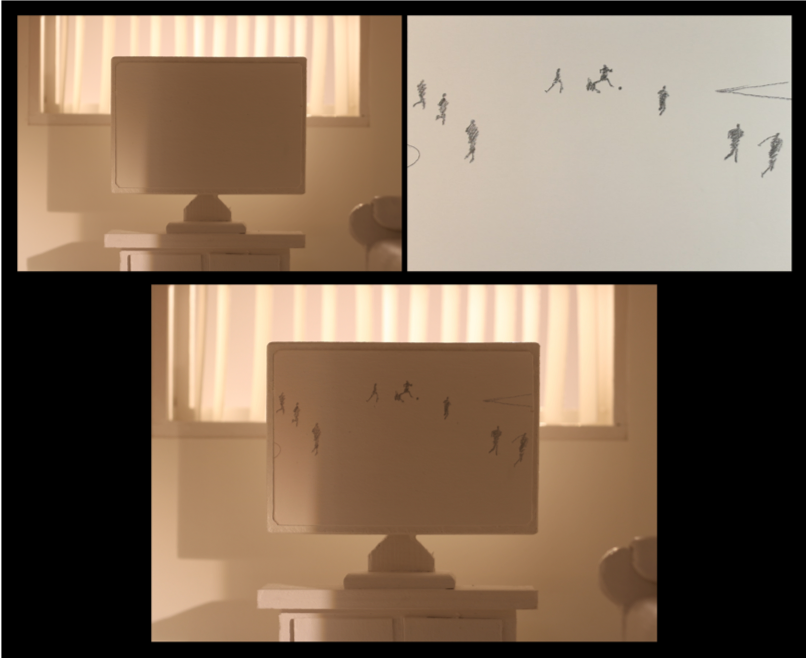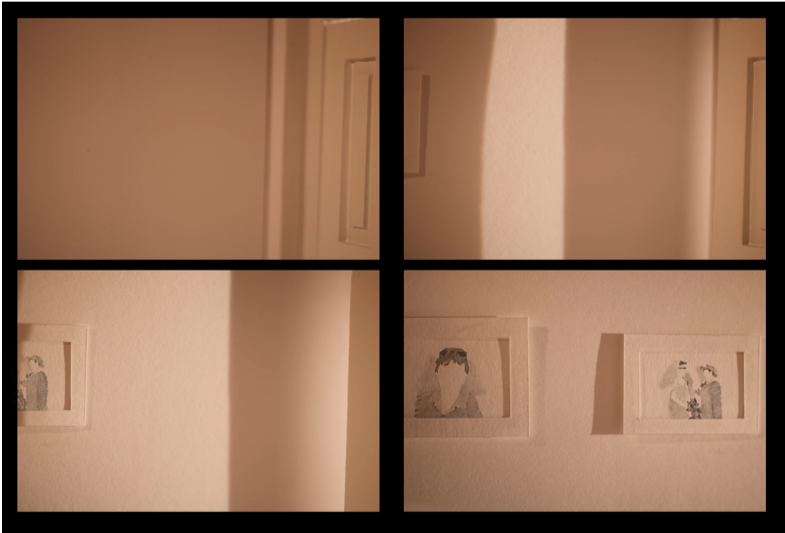‘Memory is a perpetually actual phenomenon, a band tying us to the eternal present […] Memory nourishes recollections that may be out of focus or telescopic, global or detached, particular or symbolic [… It] takes root in the concrete, in spaces, gestures, images, and objects […].’ (Nora, 1989).
This post addresses the genesis of my autobiographical animated documentary, 73 Moorside Crescent (2018), from the initial idea to the end result. More precisely, it explores certain concepts of memory, notions of the animated documentary genre, and processes of charcoal and stop motion animation that, during the production process, have prompted me to shape the film in a set way.
While studying for my Masters in Art and Design, I have researched the topic of memory, encompassing human, cultural and object memory. In particular, I have focused on the way we project certain memories into objects that we then keep to help trigger the remembering process. This could be, for example, a memory from childhood or a remembrance of a lost loved one. Objects like a jewel, a toy, an item of clothing, old photographs, letters or drawings that have been passed on ‘bring back memories and connect us to the deceased and our past’ (Schwab, 2004: 28). My family have some of these objects throughout the house. Some sit on a shelf, next to the TV, or on the bedside table, while others are kept on top of a wardrobe or cupboard in a box, hidden from view.
A trait that these different facilitations of memory share is their subjective nature. That is, what one person remembers from an event and the manner in which they remember it, may differ from someone else’s process of remembrance and memory forming. We are constantly creating new memories as we experience the world and some of our strongest memories are built from childhood: the first toy you recall playing with, the color of your bedroom, or the smell of food cooking in the kitchen.
Using some of the objects my family possess, I am able to remember certain things from the time I spent in my grandparents’ house when I was a kid. I can visualize the facade of the house, and the front door opening. I can also see their belongings in the hallway and the living room. I remember sitting in the living room by the coffee table, drawing and coloring whilst football or golf was on the TV. I can still hear the sounds of parties coming from the kitchen and the smell of cigarette permeating the house. I can also recollect my Nan taking me to a funfair around the corner from where they lived and winning a small toy from one of the carnival games.
The medium of animation has given me a platform to express such memories in a visually interesting, yet honest and personal way. Through animation, I have been able to give life to some of these memories and emotions beyond realistic representation. With memory being rooted in subjective experience, it felt necessary to spend time developing an animated platform for expression. When conversing with Michael Cusack, director of After All (2017), a poignant short animated film about a man cleaning out his mother’s house and remembering past conversations as he tidies, he said: ‘I don’t know what angle you are going to use for your film, but my advice is to be as honest as you can be’ (Cusack, 2018).
The integration of hand-drawn charcoal animation with stop motion animation has progressively began to emerge as the best way for bringing to life these memories (figure 1). The stop motion animation process has provided setting, atmosphere and environment, whilst the charcoal animation provided a playground for me to express my childhood memories. Indeed, charcoal possesses an ethereal quality that relates to the tangible nature of memory.

The personal memories I wanted to illustrate originated from a particular time during my childhood with my grandparents. Thus, their house felt like a natural and obvious setting for the animation. I have built a 1:12 scale model of their house using only the layout and objects I could remember (see figure 2). The house model has given me a way of leading the viewer on a journey into my childhood, chronologically traversing the different rooms in order to recount certain memories. For example, the camera drifts down the hallway and focuses on the picture frames along the wall. Then, charcoal animation is used to bring to life the photographs within the frames (see figure 3).

I have also used a voice over narration and a musical score to accompany the viewer through this visual journey of the house. This has helped me to further explain specific memories and create a melancholic atmosphere for the film.

An animated documentary, as is the case of this project, is routed in real events and addresses the world in which we live. Moreover, as Annabelle Honess Roe writes, it ‘invites us to imagine, to put something of ourselves into what we see on screen’ (Honess Roe, 2011: 217). This is precisely what I intended for the story of my childhood to prompt. I want it to be watched by each viewer from his or her own unique individual perspective. I want audience members to see echoes of their own past or present in the film’s narrative. They may relate to the relationship I had with my grandparents, the layout of the house, or even an event that took place there. Telling our own memories and stories to others, whether that is verbally or through an artistic medium such as animation, has the potential to become a catalyst for allowing people to imagine, question and experience somebody’s else perspective of the world.
Michael Cusack ended our conversation by saying: ‘We are lucky to be in the position to tell our stories and we should never take that for granted.’ (Cusack, 2018). This is a notion that we, as animators, film-makers and artists, should not forget.
Tom Margett is a stop motion animator and illustrator. He has recently completed an MA in Illustration, with a specialization in Animation, at Cardiff Metropolitan University. His work revolves around the creation of an environment and its atmosphere, with particular attention to lighting and cinematography.
Bibliographical References
Baddeley, A. (1999). Essentials of Human Memory. Hove: Psychology Press.
Critchley, S. (2014). Memory Theatre. London: Fitzcarraldo Editions.
Cusak, M. (2018). Personal communication, 22 February.
Fernandez, G. Hermans, E. Qin, S. Van Marle, H. (2011). “Subjective Sense of Memory Strength and the Objective Amount of Information Accurately Remembered Are Related to Distinct Neural Correlates at Encoding”, Journal of Neuroscience, 31(24), pp. 8920-8927.
Gaesser, B, J. (2013). “Constructing Memory, Imagination and Empathy: A Cognitive Neuroscience Perspective”. Frontiers in Psychology, Vol 3, Article 576.
Honess Roe, A. (2011). “Absence, Excess and Epistemological Expansion: Towards a Framework for the Study of Animated Documentary”, Animation: an Interdisciplinary Journal, 6(3), pp. 215-230.
Nora, P. (1989). “Between Memory and History: Les Lieux De Memoire”, Representations, 26, pp. 7-24.
Schwab, R. (2004). “Acts of Remembrance, Cherished Possessions, and Living Memorials”, Generations, 28(2), pp. 26-30.

1 comment for “Using Animation as a Playground for My Memories”